Pippa Dyrlaga is a Yorkshire, England-based artist who, with only a piece of paper, a drawing instrument, and a precision knife, creates an imaginative world of creatures and places that evokes awe toward the natural world. She does this by using her vision, time, and patience to cut intricate patterns of curves and lines that turn into the feathers and scales, ripples and clouds that inform her work and point the viewer to discover and rediscover delight in the beauty and relationships all around them.
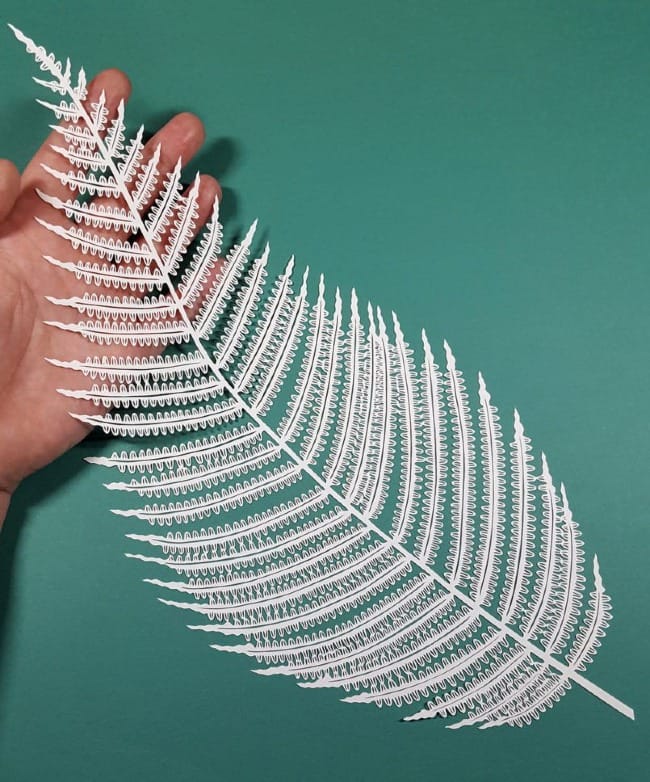
The art she practices springs from a love of beauty, a concern for the created world, and an enjoyment of the careful and detailed task itself. Originally, she was drawn to this art form because she needed a creative outlet, and the cost of supplies was appealingly low. She has since found other motivations for continuing with this particular form of artistic expression.
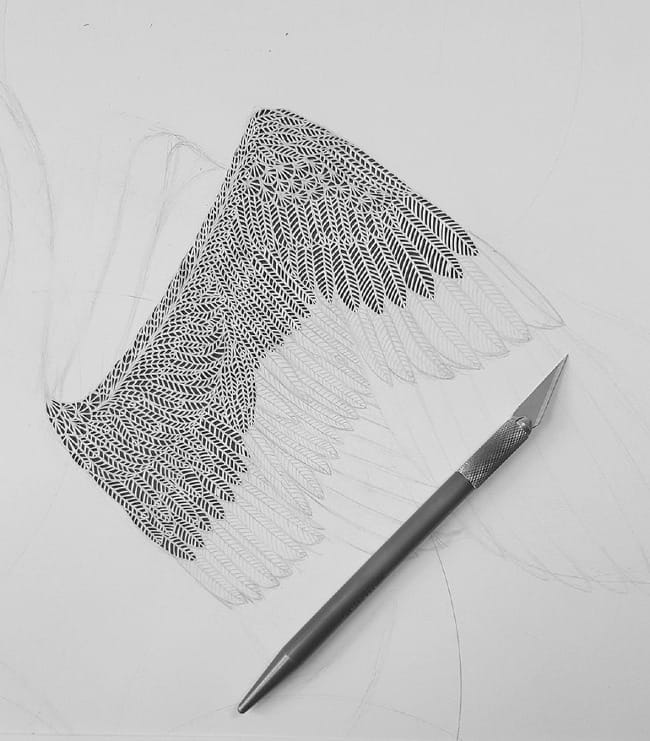
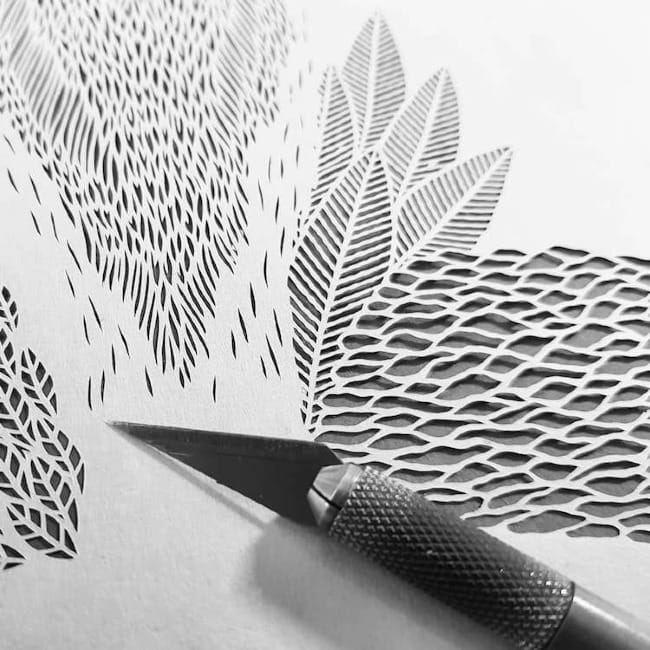
Detail of work in process, Pippa Dyrlaga
Unlike more traditional paper cutting techniques in which up to eight sheets of paper are used, Dyrlaga uses only a single sheet of paper. Also, instead of folding the paper before cutting it, which is a typical method, she draws the image on the back side of the paper and then, along the lines she has created, cuts out the paper with an Exacto knife. She has been paper cutting for 13 years, in which time she has learned and developed her own particular methods of the art—creating delicate, detailed, fragile pieces of art as a result.
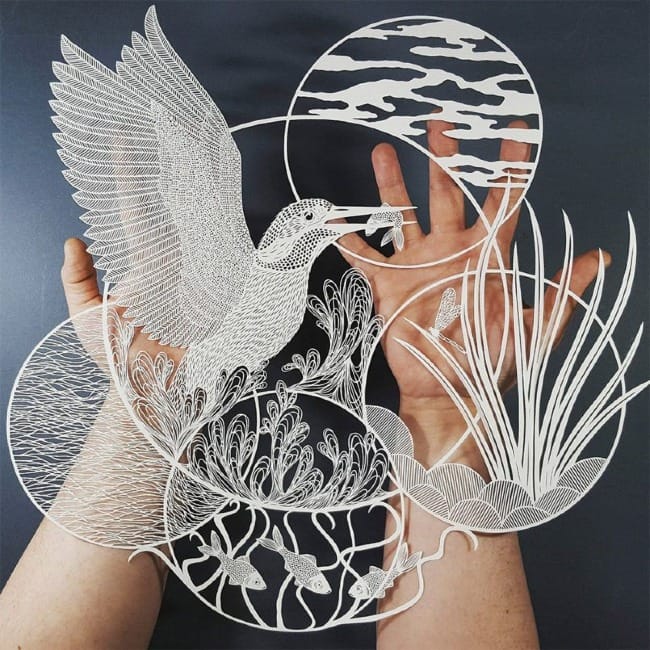
Her love of the natural world inspires her work, and this love has grown out of her childhood. When she was ten years old, her family (two parents and three girls), moved onto a canal boat in West Yorkshire and that is where she spent most of her growing-up years. As a result, her affections became deeply enmeshed in the countryside and the variety of wildlife that surrounded her. This exposure continues to inspire her work; as she says, she has always noticed beauty and picked up things in nature that attracted her to their beauty.
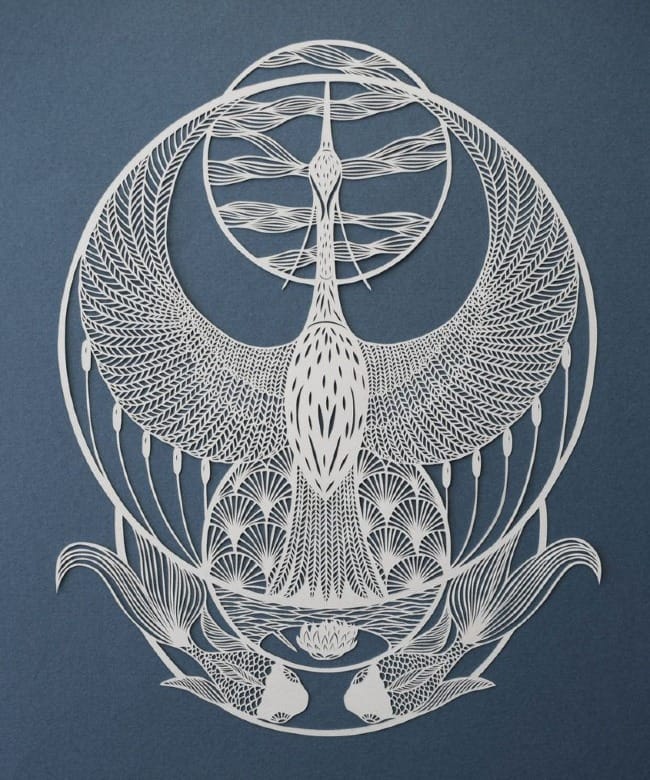
From early on, she needed creative outlets and gravitated toward working with and creating things with her hands. The patterns she now creates with her paper cuttings aren't literal representatives, but are more evocative pieces that look beyond surface appearances to show the feel of things and to point out interconnections between different members of the created world.
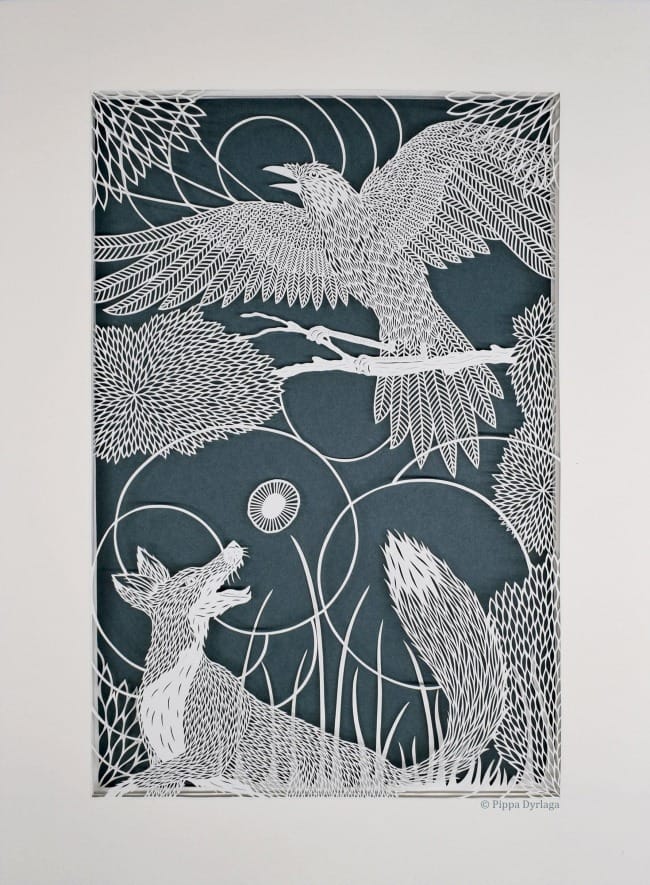
There is a strong sense of story and folklore in her work. This can easily be seen in work such as The Raven and The Fox, (shown above) which was created as part of a larger body of work illustrating Aesop's Fables. (This particular illustration was long-listed for the World Illustration Awards). Because of the repeated patterns and forms and the uncolored paper used, there is a strong sense of unity and relationship between the different parts of the piece. The plants and animals are all distinct, but they are also all connected and part of a larger place and story. It has the feel of an ecosystem of relationships. The addition of color into some of her pieces has the effect of emphasizing the individual parts and their distinctness, which creates a different emphasis than the unpainted pieces.
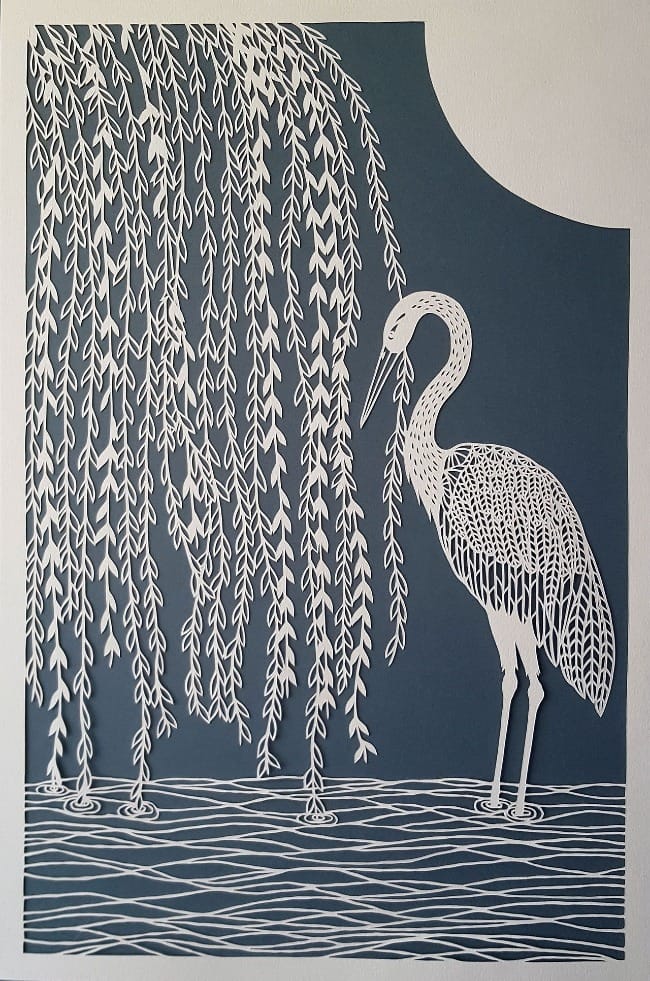
Even in work less directly tied to folklore and fables, there is a sense of myth and a dreamlike quality that permeates her work. In "Between Willow," pictured above, there is the sense that there is a story being told in the picture, that it isn't merely a snapshot of a scene.
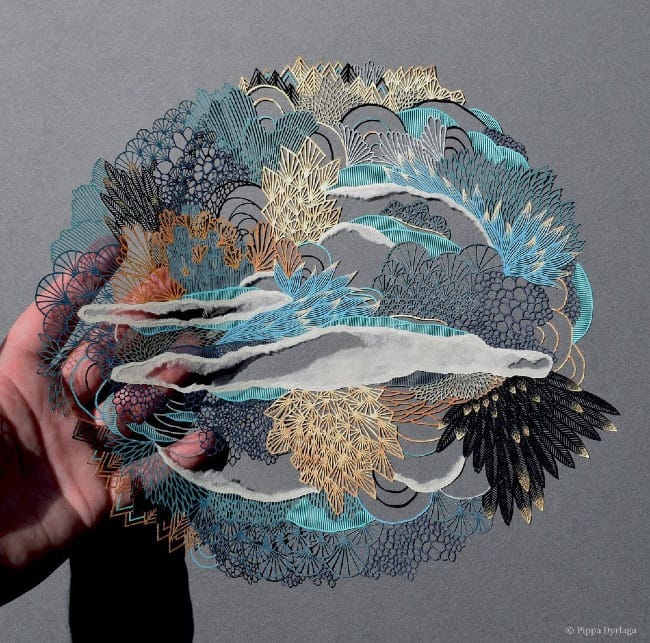
There is also a sense of the fragility of the world, which is beautifully paralleled in the fragility and delicacy of the work she creates. The paper she is working with is a fairly delicate medium to start with and then, by cutting away pieces so that there is as much empty space as filled space, the designs end up being held together in places by thin strands that are vulnerable to being torn or crumpled if great care is not taken with them.
An awareness of the connectedness of the world as well as its vulnerability is part of what she hopes will be accomplished by her work. As she says, “I think artists can play a big part in the conversation surrounding climate change. Through conveying a message to bringing topics to the discussion table, we can create something real and visual, that people can connect with emotionally and relate to. Not just in a message we are trying to convey with our work, but in the materials we use too and the things we create, we can also play our own part in smaller ways.”
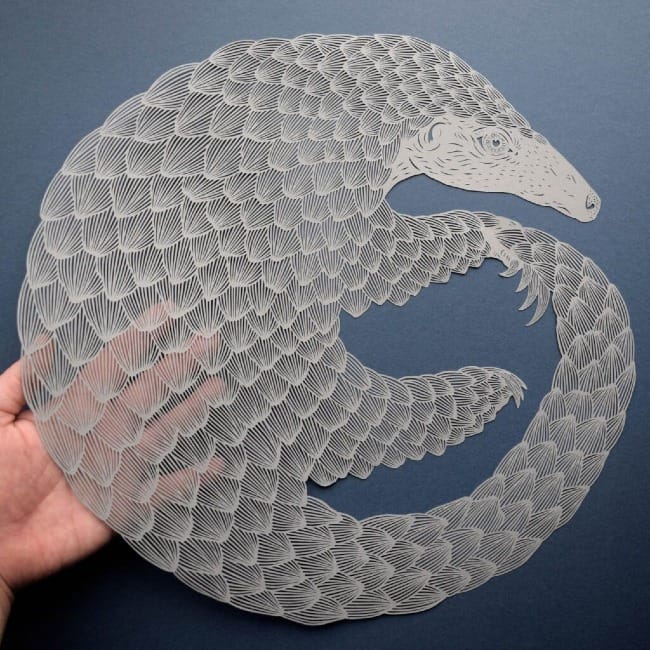
This consciousness is what led Dyrlaga to create Pangolin, a piece created for World Wildlife Days in 2022. The pangolin is a critically endangered species and one that is often considered the most trafficked animal in the world. (Its meat is a hugely expensive delicacy in Asian countries such as Vietnam and China; its scales are used for traditional medicine, and its skin is used for boots and other leather products). In describing her motive in creating the piece, she says, " I placed it in a vulnerable pose in a natural environment to respond to the plight of these interesting creatures."
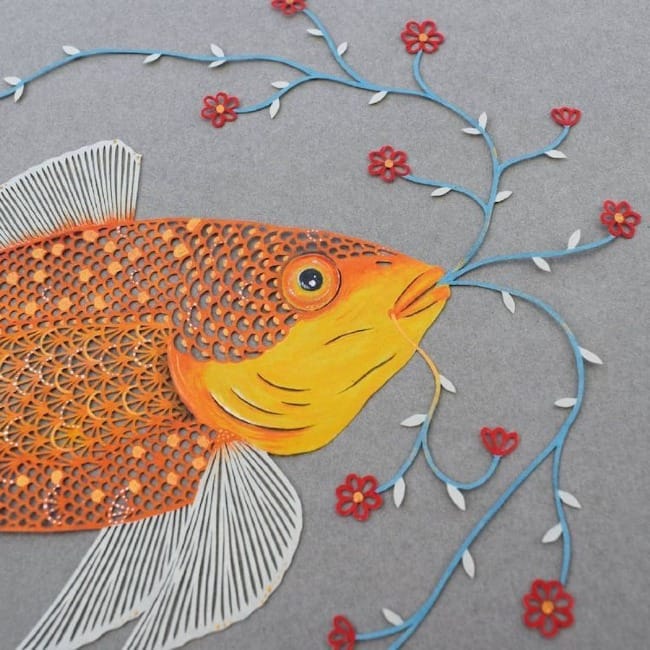
Dyrlaga's pieces can take anywhere from four to 300 hours to complete, depending on the size and amount of detail. But Dyrlaga doesn't rue this time spent—she finds the time spent creating the work satisfying in and of itself.
As she says. "The process is a big part of a finished piece for me, rather than it just being about the end result, the calm rhythm of it feels quite like meditation."
Reflection Question: Are there practices you have that both produce something you want to produce and also create a set-aside internal space of contemplation or nurturing calmness? What do you do, or what might you do, to make room for these times in your schedule?
"There is definitely a meditative aspect to paper cutting. You have to focus and get into a rhythm. Through my work, I have taught myself patience and quietness, and those are skills I take away and use in other aspects of my life, too," says Dyrlaga.
Reflection Question: Are there certain of your work habits that create a positive habit or attitude that you are able to carry forward into different areas of your life?
You can purchase original art via Dyrlaga’s website, and keep up to date with her latest projects by following her on Instagram.
If you become intrigued enough with Dyrlaga's work to try your own hand at paper cutting, send me a picture of your creation as I would love to share it with our readers!
Feel free to comment below or contact me directly at info@circlewood.online.
Louise
